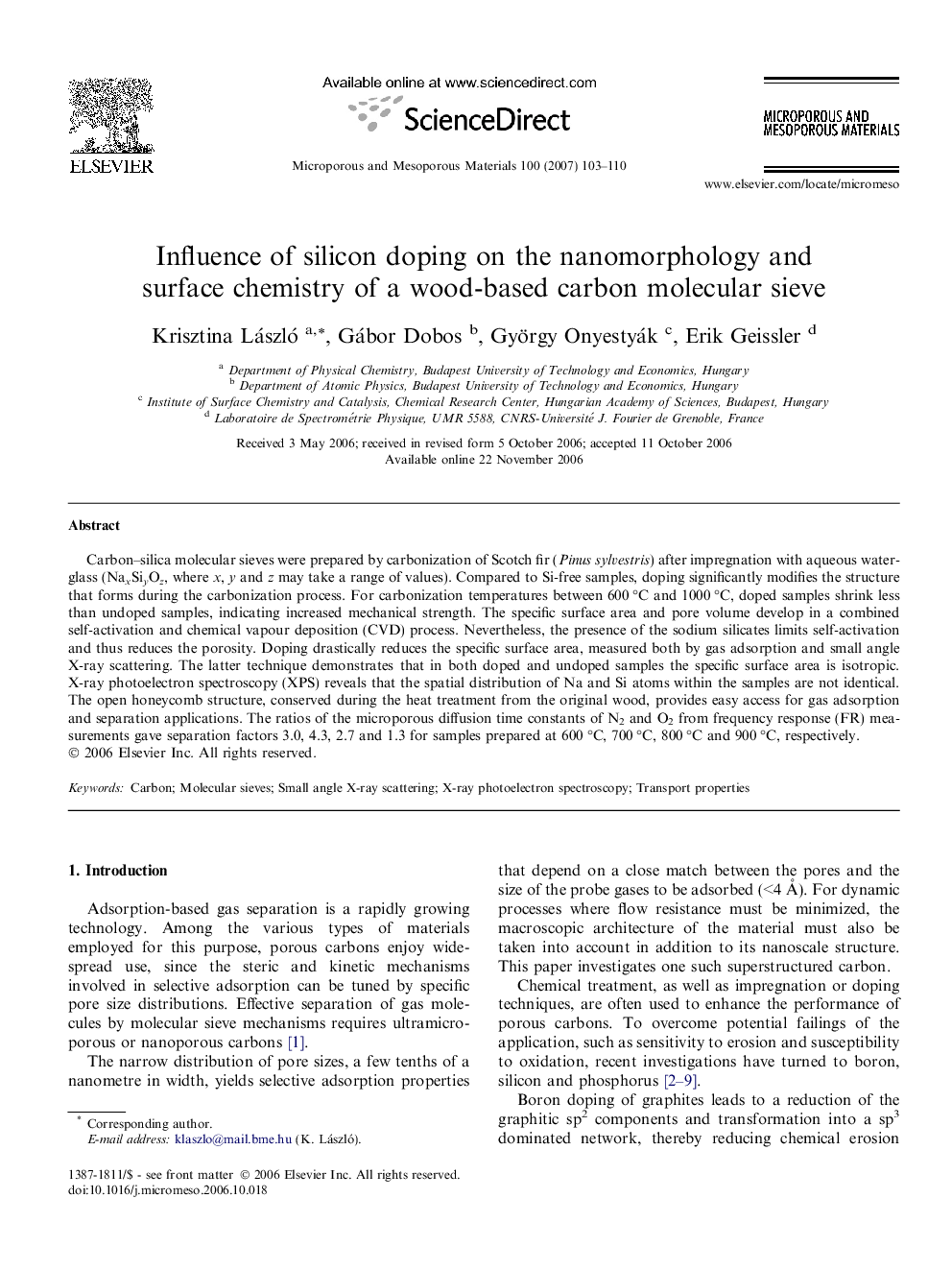| Article ID | Journal | Published Year | Pages | File Type |
|---|---|---|---|---|
| 76543 | Microporous and Mesoporous Materials | 2007 | 8 Pages |
Carbon–silica molecular sieves were prepared by carbonization of Scotch fir (Pinus sylvestris) after impregnation with aqueous waterglass (NaxSiyOz, where x, y and z may take a range of values). Compared to Si-free samples, doping significantly modifies the structure that forms during the carbonization process. For carbonization temperatures between 600 °C and 1000 °C, doped samples shrink less than undoped samples, indicating increased mechanical strength. The specific surface area and pore volume develop in a combined self-activation and chemical vapour deposition (CVD) process. Nevertheless, the presence of the sodium silicates limits self-activation and thus reduces the porosity. Doping drastically reduces the specific surface area, measured both by gas adsorption and small angle X-ray scattering. The latter technique demonstrates that in both doped and undoped samples the specific surface area is isotropic. X-ray photoelectron spectroscopy (XPS) reveals that the spatial distribution of Na and Si atoms within the samples are not identical. The open honeycomb structure, conserved during the heat treatment from the original wood, provides easy access for gas adsorption and separation applications. The ratios of the microporous diffusion time constants of N2 and O2 from frequency response (FR) measurements gave separation factors 3.0, 4.3, 2.7 and 1.3 for samples prepared at 600 °C, 700 °C, 800 °C and 900 °C, respectively.
